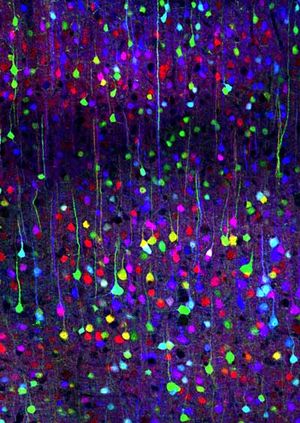Difference between revisions of "Application of GFP in neuroscience"
(Created page with "The luminescent properties of the jellyfish Aequorea victoria led to the characterisation of the green fluorescent protein (GFP). Martin Chalfie, Osamu Shimomura, and Roger Y....") |
(No difference)
|
Revision as of 09:55, 19 April 2013
The luminescent properties of the jellyfish Aequorea victoria led to the characterisation of the green fluorescent protein (GFP). Martin Chalfie, Osamu Shimomura, and Roger Y. Tsien were awarded the 2008 Nobel Prize in chemistry on 10 October 2008 for their discovery and development of the green fluorescent protein. The GFP and the luciferase enzyme from Vibrio fischeri have widespread uses in molecular biology as a reporter protein. By using DNA technology, researchers can now connect GFP to other interesting, but otherwise invisible, proteins. This glowing marker allows them to watch the movements, positions and interactions of the tagged proteins [1].
"Brainbow"
For instance, Jeff Lichtman and Joshua Sanes, researchers at the Harvard Brain Center, have created transgenic mice with fluorescent multicolored neurons. The photographs of the mouse brains appeared in the November 1, 2007 issue of Nature. The mice created by a genetic strategy termed "brainbow" will have a great effect on neuroscience. Using a brainbow of colors, researchers will now be able to map the neural circuits of the brain. The individually colored neurons will help define the complex tangle of neurons that comprise the brain and nervous system. By creating a wiring diagram of the brain, researchers hope to help identify the defective wiring found in neurodegenerative diseases such as Altzheimer's and Parkinson's disease [2].
